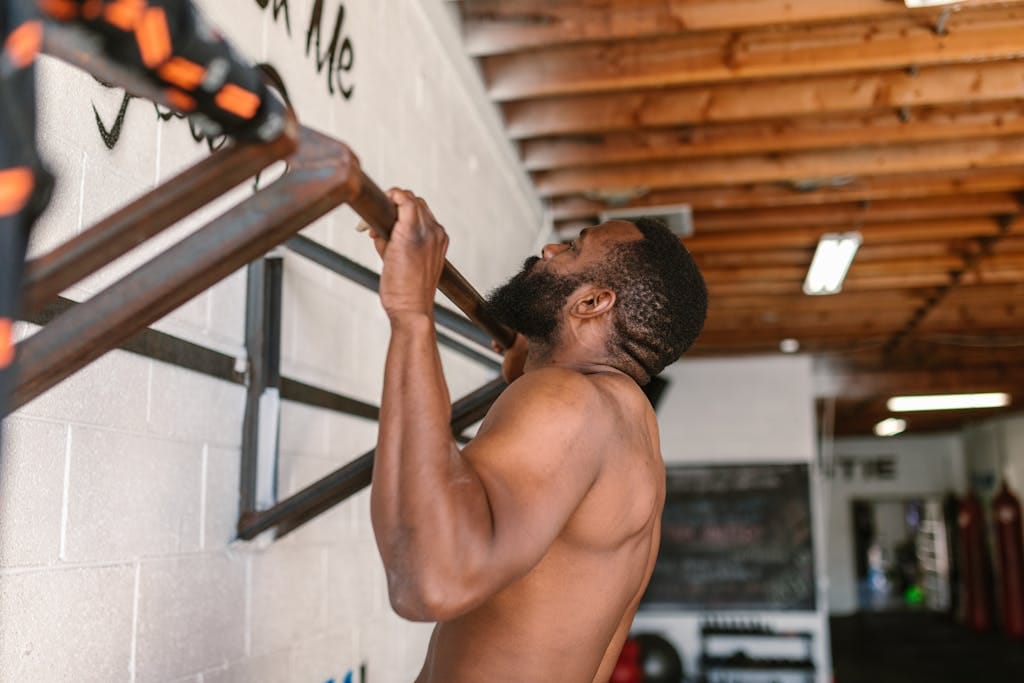FREE SHIPPING OVER $50
Do Pull-Ups Feel Impossible? Discover the Game-Changing Trick Experts Swear By
Pull-ups are often considered one of the most challenging bodyweight exercises. For many, they can feel downright impossible. Whether you’re struggling to do your first pull-up or looking to refine your form, you’re not alone. This article will break down why pull-ups are so tough, the game-changing trick that experts recommend, and actionable steps to master this iconic move.
Why Are Pull-Ups So Challenging?

Pull-ups require significant upper body strength and coordination. Here’s why they can feel so tough:
- Multiple Muscle Groups in Action: Pull-ups engage your back (latissimus dorsi), shoulders, arms, and core simultaneously. Weakness in any of these areas can hold you back.
- Body Weight Dependency: Unlike other exercises, pull-ups involve lifting your entire body weight, making them inherently more difficult for beginners.
- Grip Strength: A strong grip is crucial for holding onto the bar, and many beginners underestimate its importance.
The Game-Changing Trick Experts Swear By
Here’s the secret: Assisted Pull-Ups Are Your Best Friend.
Many fitness experts recommend using assistance tools or techniques to build strength and confidence progressively. Here’s how to incorporate this game-changer into your routine:
1. Resistance Bands
Using a resistance band is one of the easiest ways to assist your pull-ups.
- Loop a sturdy band around the bar and place one foot or knee in the loop.
- The band provides upward force, reducing the weight you need to lift.
- Gradually use lighter bands as you build strength.
2. Assisted Pull-Up Machines
Most gyms have assisted pull-up machines with adjustable weight settings.
- Set the machine to provide enough support so you can perform at least 6–8 pull-ups.
- Decrease the assistance over time to increase difficulty.
3. Partner Assistance
If you have a workout buddy, they can provide support by lifting your legs slightly during the pull-up motion.
Building Strength for Pull-Ups
Assistance is only part of the equation. You’ll also need to develop the muscle groups involved in pull-ups. Here’s how:
1. Strengthen Your Back
Your lats are the primary movers in a pull-up. Focus on these exercises:
- Lat Pulldowns: Mimic the pull-up motion while adjusting the weight.
- Dumbbell Rows: Strengthen your lats and improve your pulling power.
2. Work on Your Arms
Strong biceps and forearms are essential. Include these exercises in your routine:
- Bicep Curls
- Hammer Curls
- Reverse Curls for grip strength.
3. Activate Your Core
A strong core stabilizes your body during pull-ups. Try these core exercises:
- Planks
- Hanging Leg Raises
- Mountain Climbers
4. Improve Grip Strength
Grip strength is often a limiting factor. Practice these:
- Dead Hangs: Hang from the pull-up bar for as long as you can.
- Farmer’s Carries: Walk while holding heavy dumbbells to boost grip strength.
Perfecting Your Pull-Up Form
Even if you can’t do a full pull-up yet, practicing proper form is essential:
- Grip the Bar Correctly: Hands should be shoulder-width apart with palms facing away from you.
- Engage Your Core: Keep your body straight and avoid swinging.
- Initiate with Your Back: Focus on pulling from your lats rather than relying solely on your arms.
- Controlled Movement: Avoid rushing. Pull yourself up steadily and lower yourself back down with control.
Common Mistakes to Avoid
Many beginners make mistakes that hinder their progress. Watch out for these:
- Relying Too Much on Momentum: Swinging your body to generate force can lead to injury.
- Neglecting Full Range of Motion: Ensure your chin clears the bar and lower yourself completely.
- Skipping Accessory Work: Supporting exercises are crucial for overall strength.
Progression Plan: From Zero to Hero
Here’s a simple plan to master pull-ups over time:
- Weeks 1–4: Focus on assisted pull-ups, lat pulldowns, and grip-strength exercises.
- Weeks 5–8: Gradually reduce assistance while increasing the number of reps.
- Weeks 9–12: Attempt unassisted pull-ups. Aim for at least one solid pull-up and build from there.
Why Pull-Ups Are Worth the Effort
Mastering pull-ups isn’t just about bragging rights. They offer numerous benefits, including:
- Improved Upper Body Strength: Pull-ups work multiple muscle groups at once.
- Functional Fitness: They mimic real-life pulling motions, making you stronger for everyday tasks.
- Better Posture: Strengthening your back and shoulders helps counteract the effects of sitting.
Conclusion: Yes, You Can Do Pull-Ups!
Pull-ups might feel impossible at first, but with the right approach, they’re within reach. Whether you’re using resistance bands, building your strength, or perfecting your form, persistence is key. By incorporating these tips and tricks into your fitness routine, you’ll soon conquer the pull-up bar and unlock your full potential.
Related Articles
- Free 28-Day Somatic Workout Plan (PDF)
- 5 Fitness Myths Every Beginner Falls For, According to Trainers
- The Secret to Building Muscle Over 40—Without Lifting Heavy Weights
- How a Busy Dad Got Shredded With Just 15 Minutes a Day
- Top 10 Best Pre Workout For Muscle Gain 2024
- The 10 Best Deltoid Exercises for Building Stronger Shoulders



